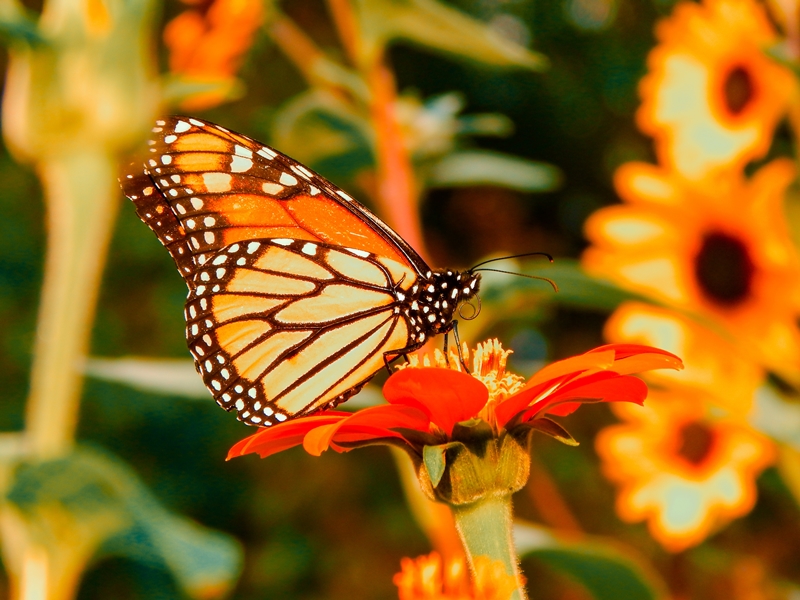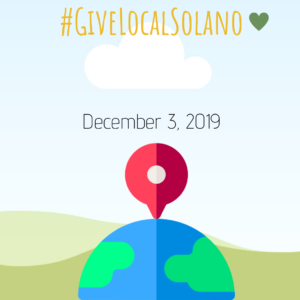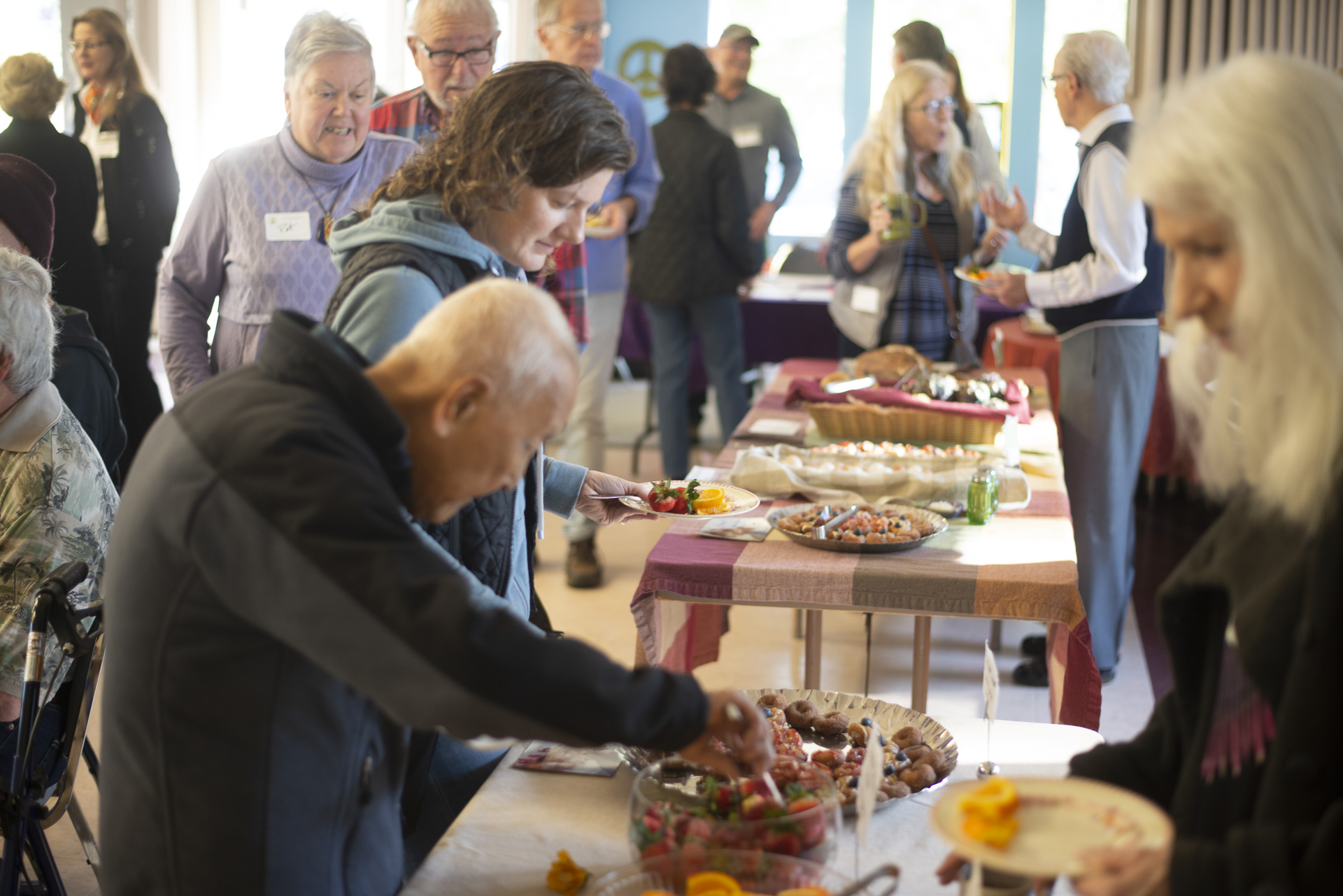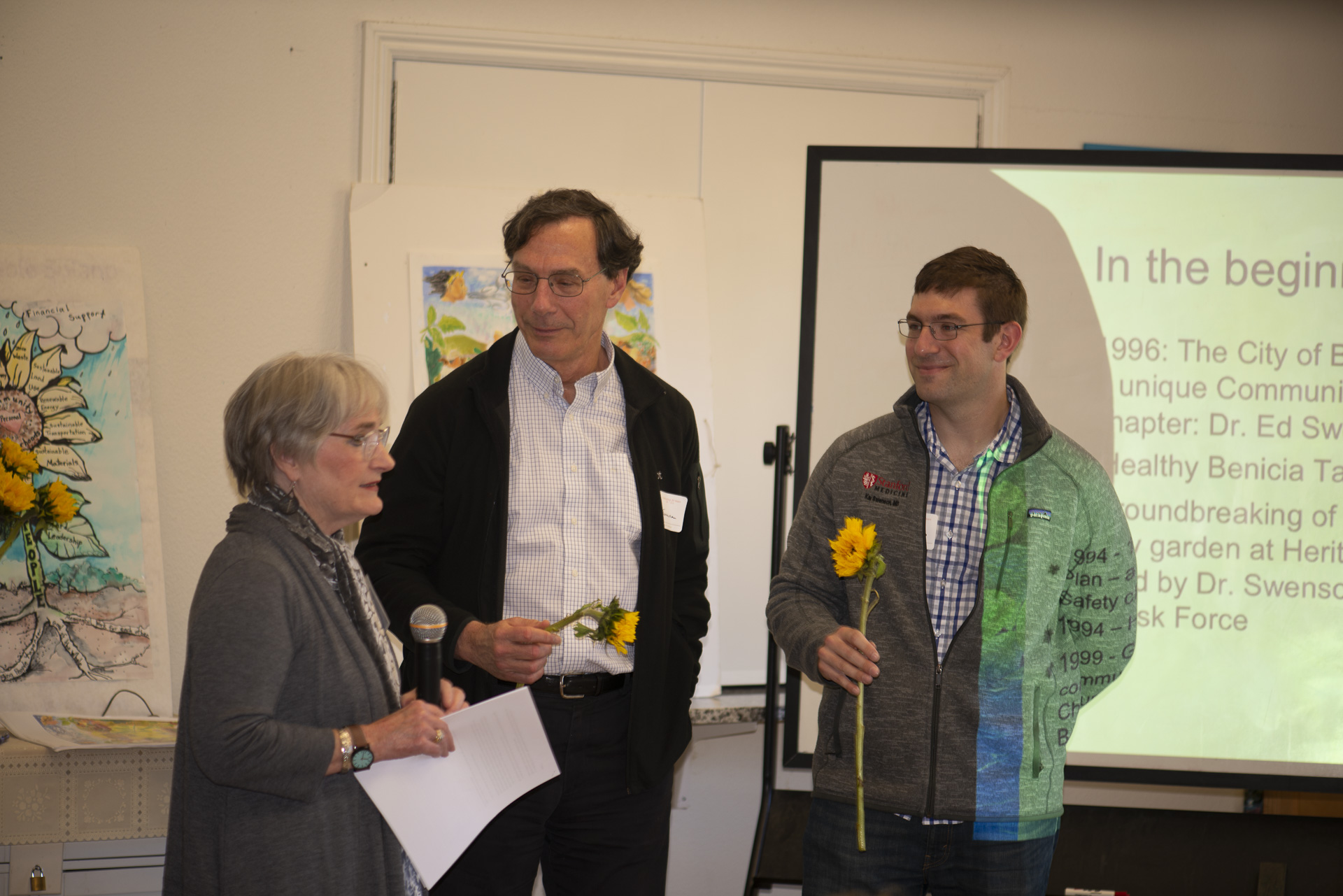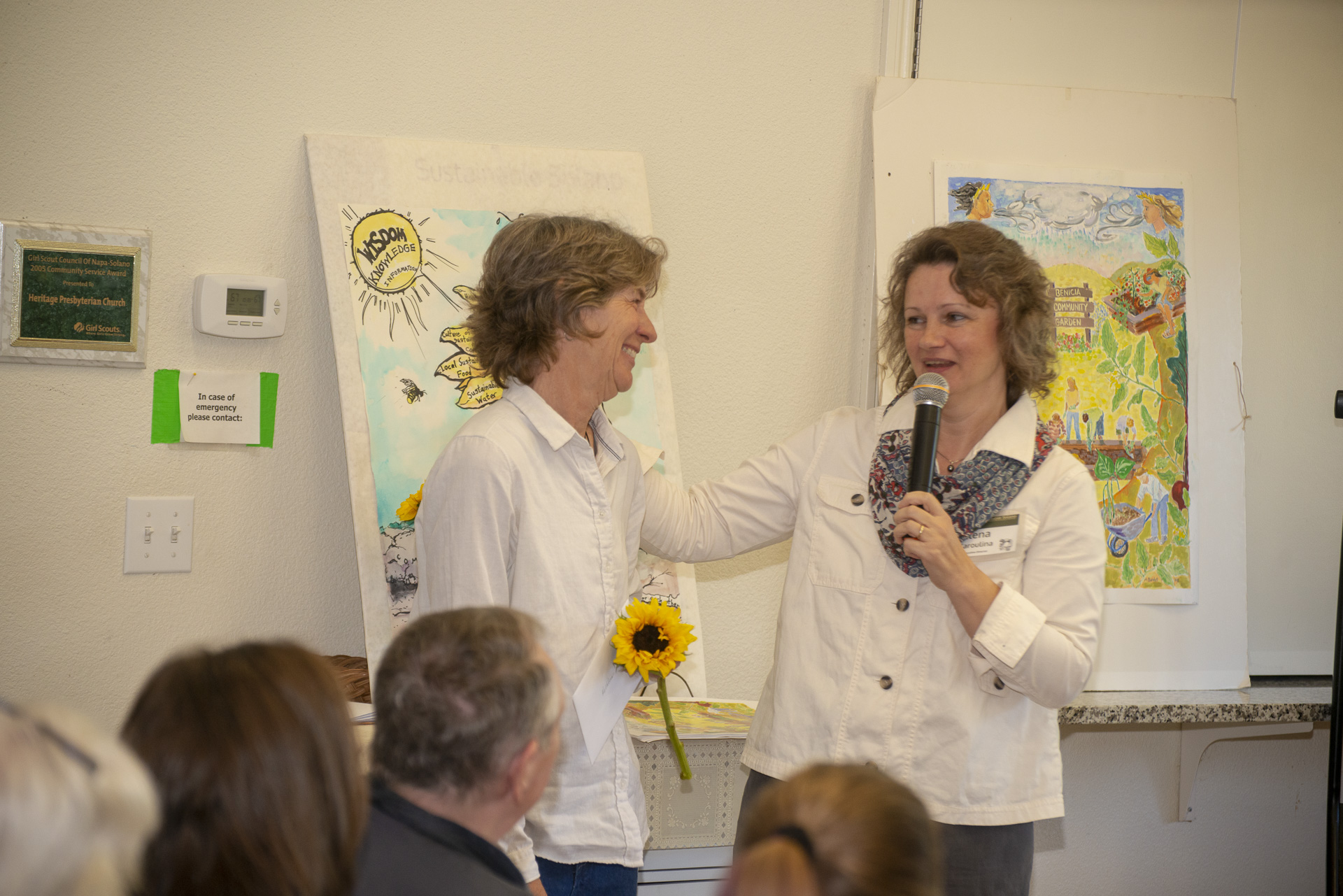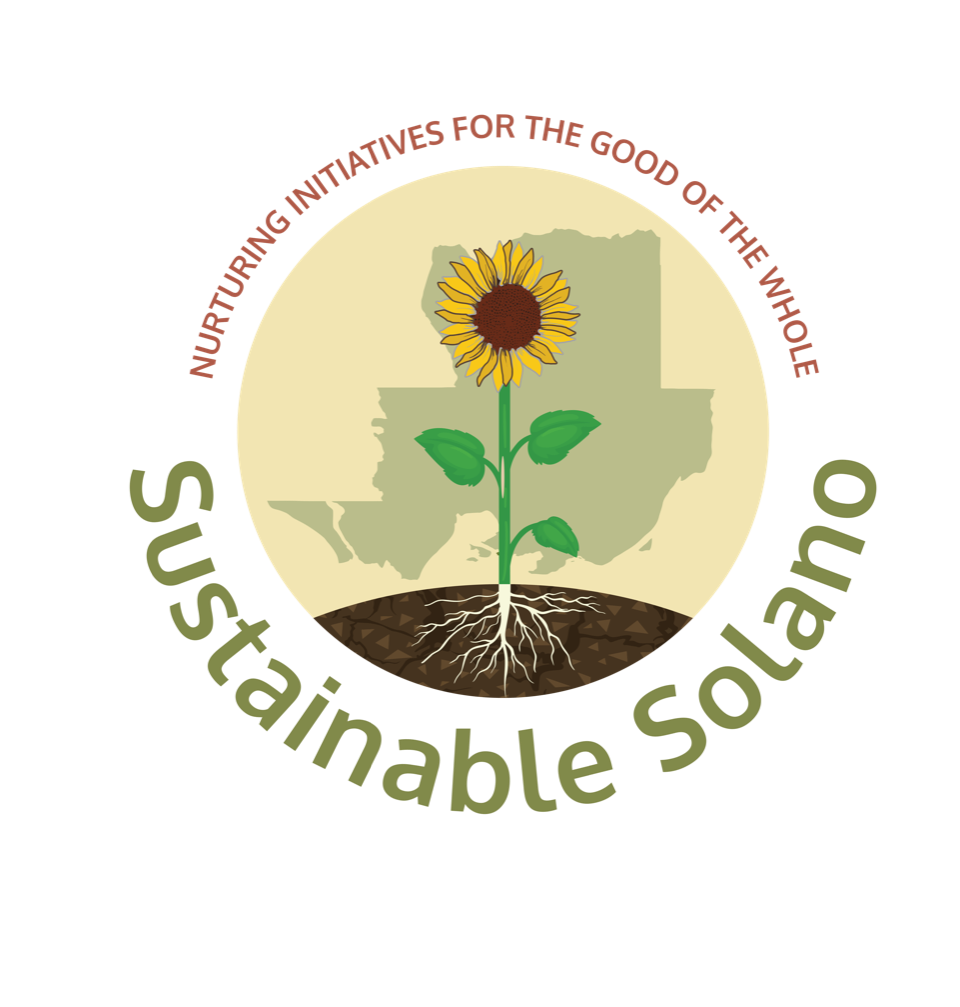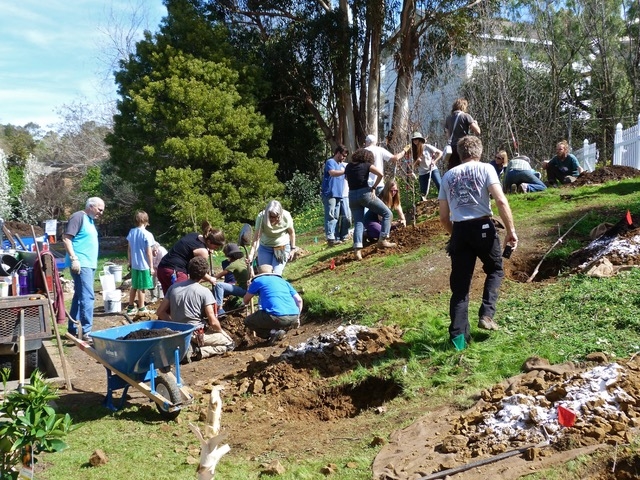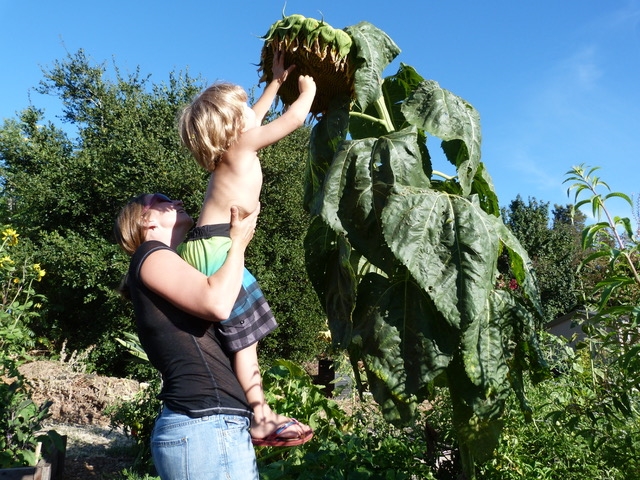The wonga wonga is in bloom, reminding me with its bunches of cream trumpet blossoms that despite what our personal or communal pandemic worries are, spring is upon us. And that I had to take a moment to appreciate that the Food Forest that you all helped install is coming to its own. Why, it’s old enough to take off to Kindergarten. Or in its case, Gartengarten. And take off it has.
I joked the other day, as stories of toilet paper flying off the shelves and food goods disappearing left and right swirled around, that I had not even checked my toilet paper stores because have you seen how much lamb’s ear was growing in my garden? Likewise, walking through its ever-changing paths (The plants have their own mind as to where the annual beds should be and what shape they should take each year — this year a very forward third-generation artichoke has declared that I am apparently going to have a keyhole bed instead of two separate ones.)
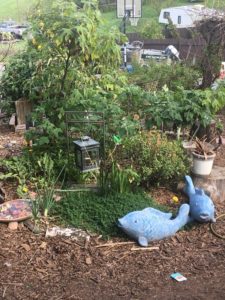 This year a roommate moved in. She is a dear old friend needing port from a storm, and seeing the garden through her response is like re-living all five years anew. She is a gardener, and she is a trained chef — and from the moment she stepped into it, they loved each other. I saw how her tense shoulders relaxed as she inspected each little nook and cranny. How her daily attentions perked up the plants who were so used to the survival of the fittest ways of Greyhawk Grove. She naturally took to it, chopping and dropping like a pro, taking last years’ pruning to make a trellis for hoped for summer cucumbers, and understanding the energy of all who have come before. And even her laughing about me eating, not the watery-sweet jicama-like root of the yacon Nicole planted years ago, but the rather tasteless rhizome, made me cheerful. (If you were wondering, she spent a good afternoon gingerly digging out all the yacon roots, and then made a lovely crunchy salad out of it with sesame oil, lemon and herbs. I hadn’t seen her so satisfied in a long time.)
This year a roommate moved in. She is a dear old friend needing port from a storm, and seeing the garden through her response is like re-living all five years anew. She is a gardener, and she is a trained chef — and from the moment she stepped into it, they loved each other. I saw how her tense shoulders relaxed as she inspected each little nook and cranny. How her daily attentions perked up the plants who were so used to the survival of the fittest ways of Greyhawk Grove. She naturally took to it, chopping and dropping like a pro, taking last years’ pruning to make a trellis for hoped for summer cucumbers, and understanding the energy of all who have come before. And even her laughing about me eating, not the watery-sweet jicama-like root of the yacon Nicole planted years ago, but the rather tasteless rhizome, made me cheerful. (If you were wondering, she spent a good afternoon gingerly digging out all the yacon roots, and then made a lovely crunchy salad out of it with sesame oil, lemon and herbs. I hadn’t seen her so satisfied in a long time.)
When I was sick, she stepped into the garden and came back with a wonderful witchy and delicious soup that she declared was made entirely from the food forest: arugula, onions, celery, parsely, potatoes, thyme, peas. I told her that having a food forest and a chef roommate was surely one of the best ways to ride out a pandemic.
Aside from food and nurturing though, gardens heal the soul. Five years ago I barely understood the concept, but now, when a curious listing for a garden educator in memory care facilities came across my path, it made perfect sense to me. This year I started working in residential facilities bringing the same elemental essence of joy and hope and community to two communities in Oakland and Lafayette.
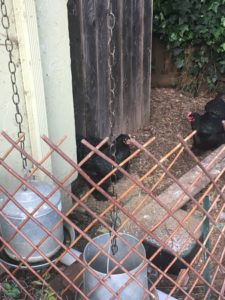 The children (now three with our new roommates) are home for at least two weeks from school, probably more. But they are happy like the birds that flood the food forest, easily moving from the home to the garden — not the slightest bit stir crazy. Graham is already eyeing the flowers budding on the berry bushes in anticipation. He diligently collects eggs each day. As he was when just a toddler watching David’s Polish chickens, he is still the one that pays attention to and cuddles them the most. He hand-picks bugs for them (mama makes sure he washes his hands really well upon coming inside), hugs them, and pets all 10 of them.
The children (now three with our new roommates) are home for at least two weeks from school, probably more. But they are happy like the birds that flood the food forest, easily moving from the home to the garden — not the slightest bit stir crazy. Graham is already eyeing the flowers budding on the berry bushes in anticipation. He diligently collects eggs each day. As he was when just a toddler watching David’s Polish chickens, he is still the one that pays attention to and cuddles them the most. He hand-picks bugs for them (mama makes sure he washes his hands really well upon coming inside), hugs them, and pets all 10 of them.
Perry catalogues all the plants in his encyclopedic mind and is quite pleased that his cat garden visitations have increased by three new cats (and that he was gifted another catnip to handle the additional load by a cat-loving neighbor). He is already planning a shortbread stand for the garden tour this year, seeking to branch out from his lemonade of previous years. “Shortbread can sell for more,” he told me. “They keep for longer. And I can use more plants from the garden, like lavender shortbread, or cheese and rosemary, or thyme, or rose, or lemon, or maybe lemon verbena. Maybe some of the berries.” Last summer he went round and collected all the edible flowers (roses, calendula, nasturtium, batchelor buttons, violas) and made sparkling sugared flowers from them. It was only a matter of time before he moved on from lemonade. Perry and the garden inspire each other onward. (While I have moved on from envy to accepting his green thumb, and simply ask him to plant things that I really want to grow. Last year it was saffron crocuses.)
Eight-year-old Seffy, the newest chaos creature to the crew, loves to flip over logs and stones and is an ace as discovering all manners of worms, bugs, and interesting finds. I had to remain straight-faced as she brought over “this really large and amazing blue centipede!!” Five years ago, none of those would have been easily found in the soil.
To have a garden is to hope. And in these times, as in all the times past, your gift of time, energy, love, and life provides shelter and hope and energy to us (and an unknown number of other critters). I hope you know that this little 20’x20′ plot has grown into something much, much larger. There is a little bit of you in those memory care gardens, a little bit of you in every bit of food prepared or eaten from this garden. In the mischief, ideas, projects and caretaking by the children. A little bit of you that sparks through the hopes and dreams and joys and quiet tears and still moments of everyone and everything that takes from and gives to Greyhawk Grove.


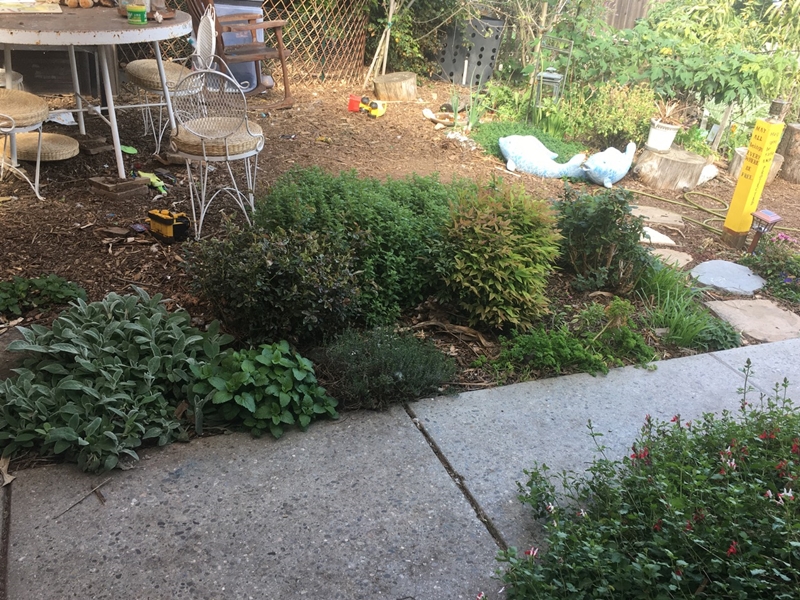
 This year a roommate moved in. She is a dear old friend needing port from a storm, and seeing the garden through her response is like re-living all five years anew. She is a gardener, and she is a trained chef — and from the moment she stepped into it, they loved each other. I saw how her tense shoulders relaxed as she inspected each little nook and cranny. How her daily attentions perked up the plants who were so used to the survival of the fittest ways of Greyhawk Grove. She naturally took to it, chopping and dropping like a pro, taking last years’ pruning to make a trellis for hoped for summer cucumbers, and understanding the energy of all who have come before. And even her laughing about me eating, not the watery-sweet jicama-like root of the yacon Nicole planted years ago, but the rather tasteless rhizome, made me cheerful. (If you were wondering, she spent a good afternoon gingerly digging out all the yacon roots, and then made a lovely crunchy salad out of it with sesame oil, lemon and herbs. I hadn’t seen her so satisfied in a long time.)
This year a roommate moved in. She is a dear old friend needing port from a storm, and seeing the garden through her response is like re-living all five years anew. She is a gardener, and she is a trained chef — and from the moment she stepped into it, they loved each other. I saw how her tense shoulders relaxed as she inspected each little nook and cranny. How her daily attentions perked up the plants who were so used to the survival of the fittest ways of Greyhawk Grove. She naturally took to it, chopping and dropping like a pro, taking last years’ pruning to make a trellis for hoped for summer cucumbers, and understanding the energy of all who have come before. And even her laughing about me eating, not the watery-sweet jicama-like root of the yacon Nicole planted years ago, but the rather tasteless rhizome, made me cheerful. (If you were wondering, she spent a good afternoon gingerly digging out all the yacon roots, and then made a lovely crunchy salad out of it with sesame oil, lemon and herbs. I hadn’t seen her so satisfied in a long time.) The children (now three with our new roommates) are home for at least two weeks from school, probably more. But they are happy like the birds that flood the food forest, easily moving from the home to the garden — not the slightest bit stir crazy. Graham is already eyeing the flowers budding on the berry bushes in anticipation. He diligently collects eggs each day. As he was when just a toddler watching David’s Polish chickens, he is still the one that pays attention to and cuddles them the most. He hand-picks bugs for them (mama makes sure he washes his hands really well upon coming inside), hugs them, and pets all 10 of them.
The children (now three with our new roommates) are home for at least two weeks from school, probably more. But they are happy like the birds that flood the food forest, easily moving from the home to the garden — not the slightest bit stir crazy. Graham is already eyeing the flowers budding on the berry bushes in anticipation. He diligently collects eggs each day. As he was when just a toddler watching David’s Polish chickens, he is still the one that pays attention to and cuddles them the most. He hand-picks bugs for them (mama makes sure he washes his hands really well upon coming inside), hugs them, and pets all 10 of them.